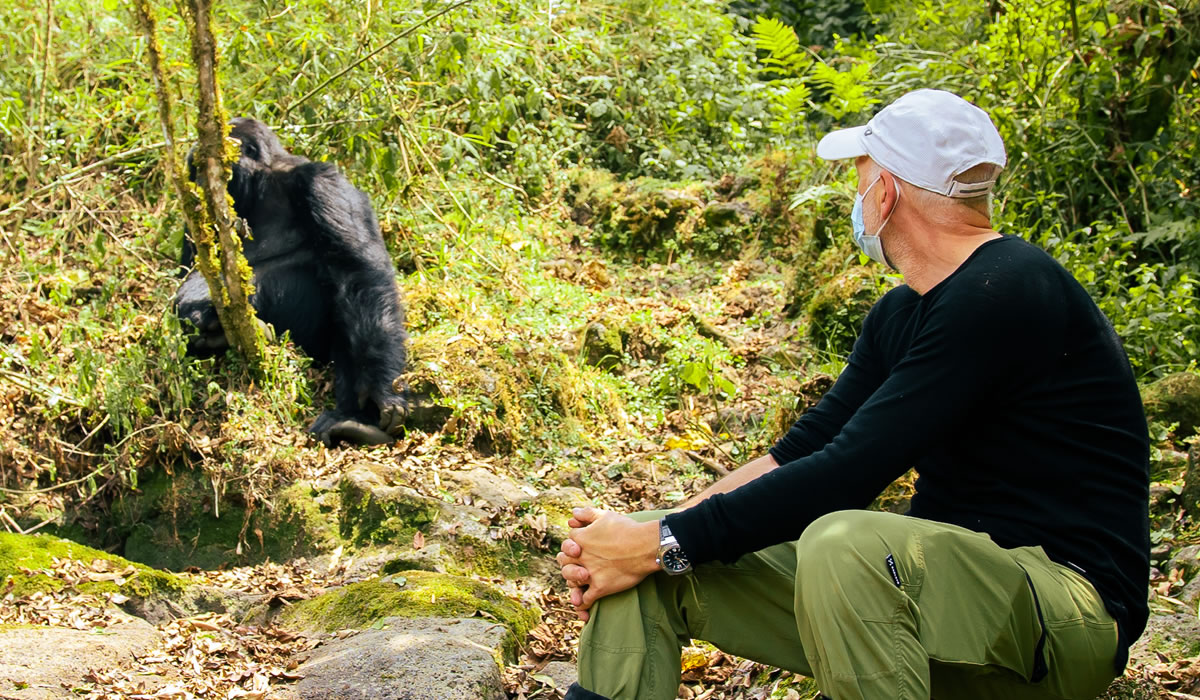Rwanda is a breathtakingly beautiful country located in East-Central Africa. Known for its rolling hills, lush green landscapes, and the iconic mountain gorillas of the Virunga Mountains, Rwanda has emerged as a premier travel destination for eco-tourists, wildlife enthusiasts, and cultural explorers. However, as with any destination, choosing the best time to visit Rwanda can greatly influence your travel experience. This article provides an in-depth look at Rwanda’s climate, tourist seasons, major events, and activities throughout the year to help you determine the optimal time for your journey.

Understanding Rwanda’s Climate
Rwanda is situated just south of the Equator, which gives it a pleasant tropical highland climate, moderated by its high altitude. The country’s climate can be broadly categorized into two wet seasons and two dry seasons:
- Long rainy season: March to May
- Long dry season: June to mid-September
- Short rainy season: October to November
- Short dry season: December to February
Temperatures in Rwanda remain relatively consistent throughout the year due to its equatorial location. In Kigali, the capital, daytime temperatures average around 26°C (79°F), while nighttime temperatures can drop to around 15°C (59°F). In the higher altitudes, such as the Volcanoes National Park, it can get considerably cooler, especially at night.
The Dry Seasons: The Best Time for Travel
The long dry season, which lasts from June to mid-September, is widely regarded as the best time to visit Rwanda. During this period, rainfall is minimal, making it ideal for outdoor activities such as hiking, wildlife safaris, and gorilla trekking. Trails in the national parks are more accessible, and the clear skies enhance the beauty of Rwanda’s natural landscapes. This is also the peak tourist season, especially in July and August, so visitors are advised to book accommodation and permits well in advance.
The short dry season, from December to February, is also a good time to visit, particularly for those seeking a quieter experience with fewer tourists. While this period is shorter and can occasionally experience light showers, it still offers favorable conditions for gorilla trekking and other outdoor adventures.
Gorilla Trekking: A Year-Round Activity with Seasonal Considerations
One of Rwanda’s biggest tourist attractions is the chance to go gorilla trekking in Volcanoes National Park, home to a portion of the world’s remaining mountain gorillas. Gorilla trekking can technically be done year-round, but the dry seasons (June–September and December–February) are considered the best times for this unforgettable activity.
During the dry months, the trails are less slippery and the forest is easier to navigate, making for a more comfortable trekking experience. Additionally, gorillas are often easier to locate during these times, as the vegetation is less dense. However, the high demand during these periods means that permits can be more expensive and harder to come by.
That said, the wet seasons particularly the short rains of October to November can also be a good time for gorilla trekking for travelers willing to brave a bit of mud and rain. During these times, the forests are lush and vibrant, the air is crisp, and the gorillas may be found at lower elevations due to the abundance of food, potentially shortening trekking times. Moreover, there are fewer tourists, and permits and accommodations may be easier to obtain.
Wildlife Viewing in Akagera National Park
Akagera National Park, located in eastern Rwanda, offers a classic African safari experience with the chance to see the “Big Five”: lions, leopards, elephants, rhinos, and buffalos. The park also boasts a wide variety of birds, hippos, crocodiles, and other savannah wildlife.
The dry seasons are the best time for wildlife viewing in Akagera, particularly June to September, when animals tend to congregate around water sources, making them easier to spot. The grass is shorter during this time, providing better visibility for spotting wildlife. The short dry season (December to February) also offers good conditions, although animal sightings may be slightly less predictable than in the long dry season.
The wet seasons can make game drives more challenging, as heavy rains can render some roads muddy and impassable. Wildlife is more dispersed due to the abundance of water sources, and visibility is reduced by tall grasses and thicker foliage. However, birdwatchers may find the wet season rewarding, as migratory species are present and breeding activity increases.
Hiking and Outdoor Adventures
Rwanda is a paradise for hikers and nature lovers. In addition to gorilla trekking, visitors can enjoy hiking in Nyungwe Forest National Park, one of Africa’s oldest rainforests, home to chimpanzees and a canopy walkway that offers breathtaking views. Other activities include climbing the volcanic peaks of the Virunga Mountains, exploring Lake Kivu’s scenic shoreline, and visiting cultural and historical sites throughout the country.
The best conditions for hiking and trekking are during the dry seasons, when trails are dry and more manageable. For the more adventurous traveler, hiking during the rainy season is possible but requires proper gear and a tolerance for slippery paths and rain-soaked terrain.
Birdwatching in Rwanda
With over 700 species of birds, Rwanda is a premier destination for birdwatchers. The country’s diverse ecosystems from montane forests to wetlands and savannah provide habitats for a wide variety of species, including several Albertine Rift endemics.
Birdwatching is a year-round activity in Rwanda, but the wet seasons are particularly rewarding. From March to May and October to November, birds are most active, and many are in their colorful breeding plumage. Migratory birds from Europe and North Africa also arrive during these months, further enriching the experience.
Cultural Events and Festivals
Rwanda offers a range of cultural events and festivals that can enhance your visit. One of the most important is the Kwibuka (Remembrance) period in April, commemorating the 1994 Genocide against the Tutsi. While this is a somber time, it offers a unique opportunity to understand Rwanda’s history and resilience.
In July, Rwanda celebrates Independence Day (July 1) and Liberation Day (July 4) with various national events and festivities. These dates coincide with the dry season, making it a great time to combine cultural immersion with sightseeing.
The Kigali International Peace Marathon takes place in May or June, attracting runners and spectators from around the world. Rwanda also hosts film, music, and arts festivals, such as the KigaliUp Music Festival and the Rwanda Film Festival, often held during the drier months for logistical convenience.
Traveling During the Rainy Seasons
While the dry seasons are ideal for most activities, visiting Rwanda during the rainy seasons especially the short rains of October to November should not be completely ruled out. These periods offer lower prices, fewer tourists, and lush, photogenic landscapes.
The long rains from March to May are the least favorable time to visit, particularly for gorilla trekking and safaris. Roads can be challenging, and some lodges and tour operators scale back operations. However, if you’re focused on birdwatching, photography, or enjoying the solitude of nature, this season still has much to offer.
Budget Considerations
Travel costs in Rwanda can vary significantly depending on the season. During the high season (June–September), prices for flights, hotels, and tour packages tend to rise due to increased demand. Travelers are advised to book well in advance to secure accommodations and permits, especially for gorilla trekking.
Conversely, the low season (March–May) may offer discounts and promotions. Some lodges reduce their rates, and tour operators may be more flexible. This can be a good time for budget-conscious travelers, provided they are prepared for the weather conditions.
The best time to visit Rwanda depends largely on your interests, budget, and tolerance for weather variability. For most travelers, the long dry season from June to September is ideal, offering the best conditions for gorilla trekking, wildlife viewing, and hiking. The short dry season from December to February also provides favorable conditions with fewer crowds.
If you’re interested in birdwatching, photography, or cultural experiences, the rainy seasons especially the short rains in October and November can still offer a rich and rewarding experience, provided you plan accordingly and come prepared for rain.
Ultimately, Rwanda is a year-round destination, each season offering its own unique charm. Whether you’re scaling volcanoes, trekking through misty forests in search of gorillas, exploring savannahs teeming with wildlife, or immersing yourself in the vibrant culture of its cities and villages, Rwanda promises an unforgettable adventure whenever you choose to visit.

